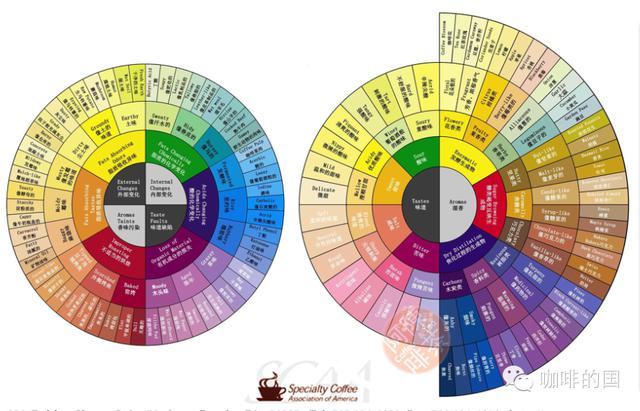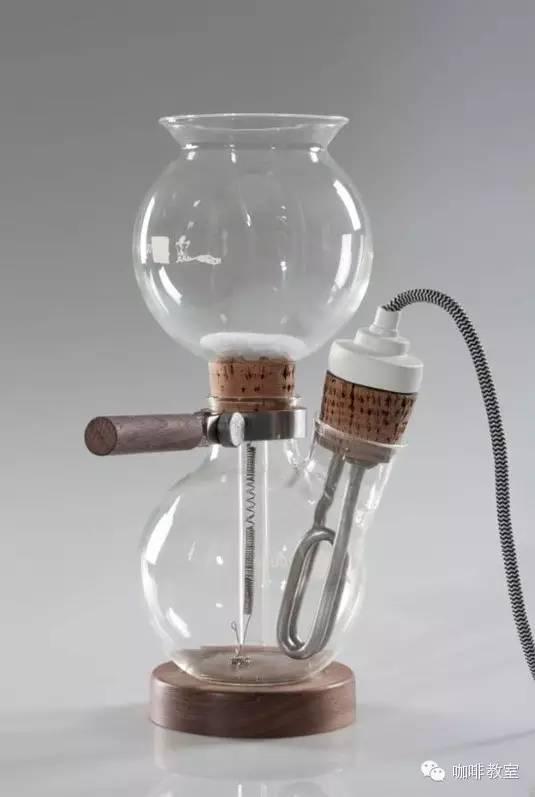Using coffee filter cup to filter out oriental aesthetic coffee process design creative design of Jingdezhen coffee filter cup
The first time I met Wei was in a spacious studio at the foot of Sanbao Village in Jingdezhen. The floor-to-ceiling windows of the studio were close to the mountain, and the studio was loosely decorated with ceramic-related facilities, large and small, as well as a native dog and a golden hair.
Once the chief designer of a famous ceramic brand in Shanghai, he now lives and works safely in Jingdezhen. Legend has it that he is quite a hermit, does not socialize very often, and does not take jobs easily, and is only willing to take on challenging projects. So I was a little nervous at the thought of negotiating with him.
And the reason we're here is that we want to make a subversive coffee filter cup. We drove hundreds of kilometers here, hoping to find the best collaborators to interpret our understanding of the beauty of coffee with a product.
China is a country with tea culture, and coffee is an imported product. For many people, the beauty of coffee is often linked to Western-style aesthetics-exquisite West Point, European utensils, afternoon time outside office buildings, sunny villa courtyards.
However, in our opinion, this should not be the whole aesthetics of coffee. Easterners have their own tastes and preferences, and coffee should not become a thing only for the pursuit of foreign style. As a Chinese drinking coffee, it should be in tune with the oriental charm.
Chinese tea culture pursues the experience of Zen and elegance, calm and relaxed, with a grand sense of ceremony, and enjoys a small time and space with people more than the drink itself. We hope to create an image so that coffee can be displayed in the time and space of oriental aesthetics and be integrated with oriental aesthetics and oriental ritual.
Finally met Wei Ying himself, is a quite angular man, calm with a serious and uncompromising temperament, estimated to have captivated many girls.
Wei Wei majored in ceramics and returned to Jingdezhen from Shanghai in order to "get closer to the material" after working in Shanghai for a few years. He has done a lot of cutlery and tea set design, advocating oriental aesthetics and "no design" design, pursuing simplicity and innovation. I made him a cup of Yega with the utensils and beans I brought all the way, which opened the prelude to the birth of this product.
After some free talk about design, we finally talked about cooperation, and we returned to Shanghai. Soon after, the first draft of Wei Fu's design came, and he moved us with a minimalist hourglass shape.
The hourglass is not only our LOGO, the hourglass itself is an interpretation of the philosophical relationship between time and space. This is exactly the direction we need.
But what we want is not a flashy work of art, but its use experience on the basis of aesthetics. First of all, it should be a good coffee extraction equipment, every detail of brewing coffee determines whether the design of this set of equipment is successful or not.
When using an ordinary filter cup, after the coffee is dripped, the filter cup is removed and I don't know where to put it, and the residual water will flow to the table. Therefore, we designed a special water tray, at the end of the extraction, the residual water can be accepted. But also can reconstruct a complete hourglass shape, so that the whole ceremony is integrated. I believe that many users who like hand-brewed coffee will feel intimate and full of B boxes.
How to fit accurately with the filter paper, how to meet the extraction principle, how to keep the water from overflowing from around, and how to hold it most comfortably. The concept is perfect, but not every detail is perfect. The more concise the design, the more exquisite each detail is needed.
So I drove to Jingdezhen again. In the studio at the foot of the hill, the two of us adjusted a line for a whole day and finally trimmed it to perfection. The model of the handle was modified no less than ten times to make the grip and beauty feel the best.
For me, who was in Shanghai all the year round, I felt a sense of alienation, feeling that I had not done such a pure design for a long time, and I often miss it, feeling that it was an interesting and unforgettable time.
Wei said that he likes to work with professional people, and he doesn't get tired of making repeated changes, but thinks it feels good. He said we were "rare clients who are picky and not picky". He told us that this product is very difficult to make, and all aspects of production can be used as examination questions.
He is a man with a sense of mission, and he thinks that Jingdezhen designer ceramists should do something to improve the industry. Just as he would vehemently criticize Jingdezhen's ceramic street lamp posts as stupid and wasteful, and criticized some so-called senior ceramists for indulging in and doing mediocre exhibitions every day, but he felt that products like Tianmu were meaningful in design. I said that I think it also makes sense for the coffee industry. Because it redefines a lot of aesthetic things, it is a creation from scratch.
In my eyes, it is the combination of oriental aesthetics and coffee, the combination of handicrafts and precision production, the combination of modern design and ancient production, and the combination of distinct modeling design and coffee extraction theory.
In line with the original intention of pursuing oriental aesthetics, we chose three kinds of glaze.
The black black iron glaze pursues the Zen aesthetics of the East. With a calm, sincere texture. The crystal flowers fired are almost uncontrollable, so each is an independent product. For this reason, we have also experimented with fifteen kilns: the small concentration change of the glaze and the atmosphere in the kiln all sensitively affect the firing results. The initial yield is less than 10%, and countless samples have been scrapped. It will make people feel sad, and it is worth making you concentrate on brewing coffee, just like entering Zen, listening to the dialogue between water and coffee, and making coffee a kind of spiritual practice.
Velvet white pursues the aesthetics of "emptiness" in the east. It has the natural beauty of white jade, the softness and gentleness of swan feathers, and the minimalist beauty of modernism. it is compatible with all space, soft and quiet. The matte velvet white is the easiest to set off the brown and bright soup color of Qingka, which can best reflect the beauty of the container. This is the charm of "silence is better than voice".
Hutian Shadow Green is not only the pride in the history of Chinese ceramics, but also the glaze color of Jingdezhen housekeeper. White inside green, handsome tall and straight, oily and smooth. Its color must be light and elegant, not too green, otherwise it is difficult to match the color of the coffee. A set of lake field shadow green, gently injected with water, washed with a pot, free and easy and happy in the fragrance, this is a typical beauty of Chinese tea art, and thus established a connection with coffee.
The name "Tianmu" comes from the magical glaze that once appeared in the Jian Kiln in the Song Dynasty, and a few isolated objects spread to Japan as national treasures, but this kind of Tianmu glaze has now been lost, so "Tianmu" has become a mysterious and beautiful legend in the history of ceramics. Today, in the name of mystery, I hope that I can leave a small stroke in this world with the power of its beauty.
Tianmu is the product that I dreamed of making when I first started the brand Tammo, so please forgive me for being not very modest today ("▽"). Fortunately, I am lucky to work with Wei Fu and Jingdezhen craftsmen to achieve such a beauty, so that I still believe in the power of design and craftsmanship.
Source: coffee slow life
Important Notice :
前街咖啡 FrontStreet Coffee has moved to new addredd:
FrontStreet Coffee Address: 315,Donghua East Road,GuangZhou
Tel:020 38364473
- Prev

The most fascinating types of coffee the difference between single coffee and blended coffee a course on black coffee
It turns out that only a bitter word is used to describe the taste of coffee. Pass! Single! Thin! What is a cup of coffee? Individual coffee is made from a single coffee bean produced in the country of origin, and it is a pure coffee with no milk or sugar when drinking. It has strong characteristics. People who like to drink coffee are generally fascinated by individual coffee. Because the instant coffee we usually drink is good, a certain brand.
- Next

Siphon pot super version of the siphon pot coffee brewing method of use coffee making technology skills
Siphon pot, commonly known as plug pot or siphon coffee pot, is a simple and easy to use coffee brewing method, but also one of the most popular coffee brewing methods in cafes. Most people often have a smattering of knowledge about it, or even a wrong impression, and there are usually two extreme views, one is that some people are cautious and fearful of it, and the other is that? is that using a siphon coffee pot is nothing more than boiling water.
Related
- Why can American refills for free? The difference between Americano and American drip pot coffee
- Being chased out of the rain in front of Starbucks?! Store: Sheltering from rain under umbrellas poses a safety hazard
- The white moonlight has changed?! Lucky launches "Big Winter Pear American"
- Hand-brewed coffee three-stage method, high-sweet and universal brewing method to share! What does the high sweet water level of hand-brewed coffee mean?
- What is the difference between raw, refined and full espresso coffee? How to extract espresso and taste good?
- A complete list of coffee bean names and their meanings! What is Yejia Shefi coffee? Where is Mantelin coffee?
- What grade does Arida Manor Kaduai coffee beans belong to? What treatment is Arida ASD slow anaerobic sun exposure?
- The milk tea cup becomes smaller?! Overlord Tea Girl launches a new "Return to Yunnan" series
- Accused of selling counterfeit and high-priced coffee beans! Well-known boutique coffee brand "Oukelao" bowed and apologized!
- How to make espresso dumplings? Can I eat coffee and glutinous rice balls together?

